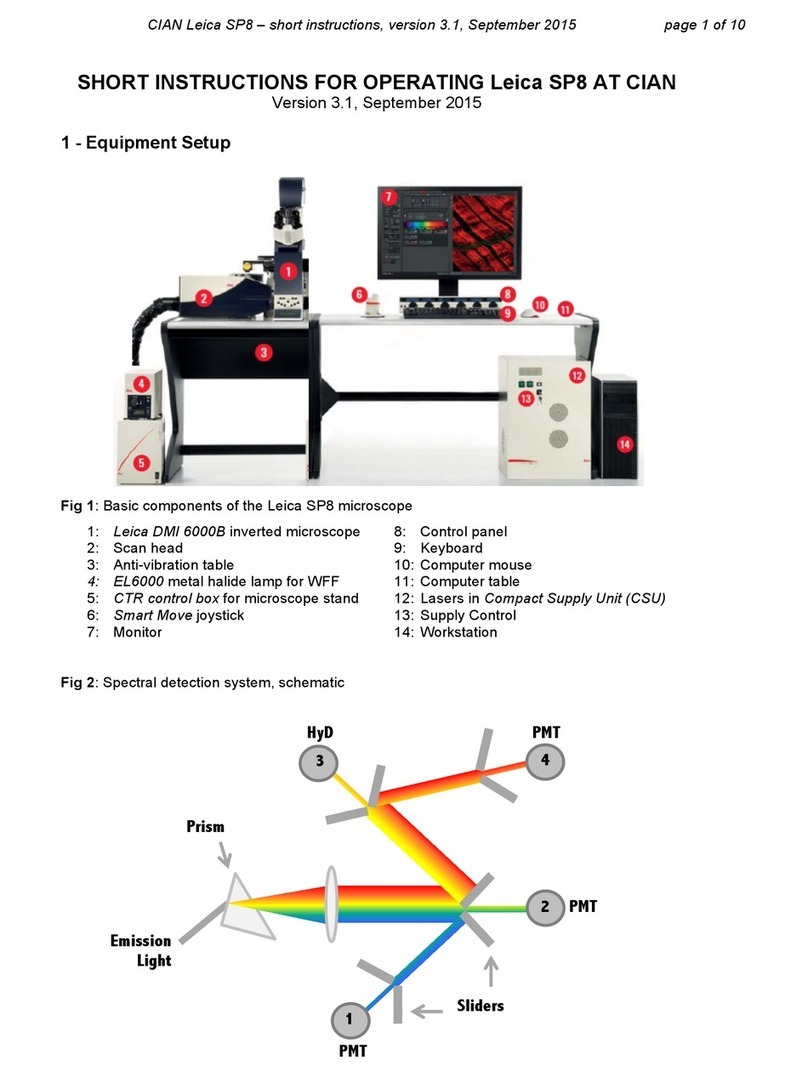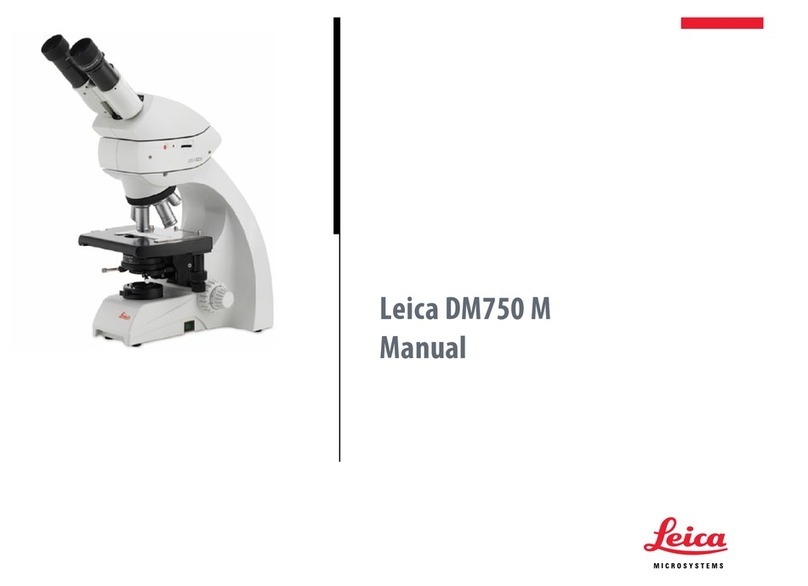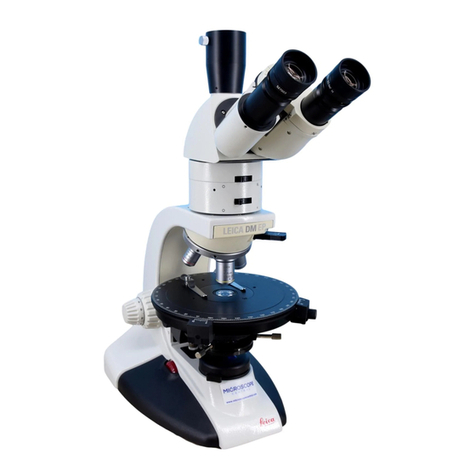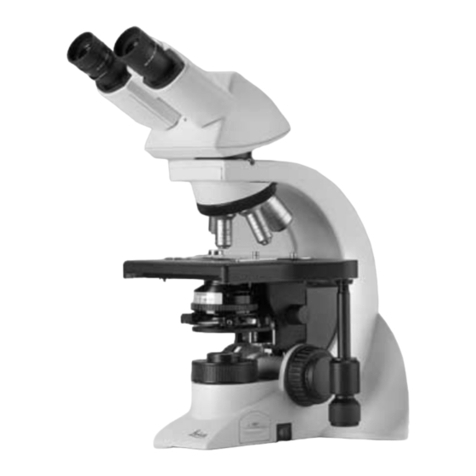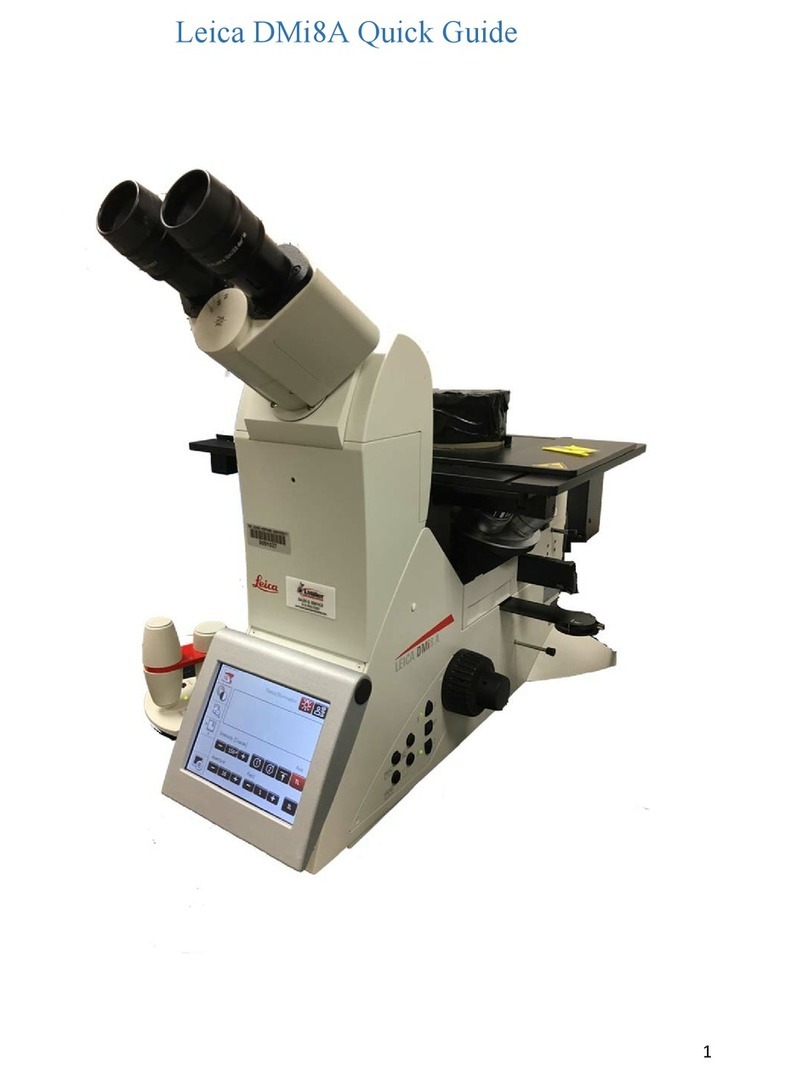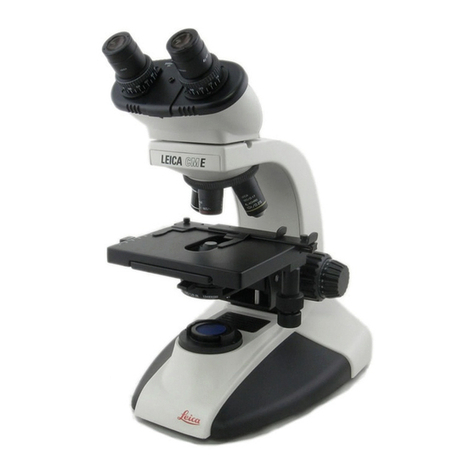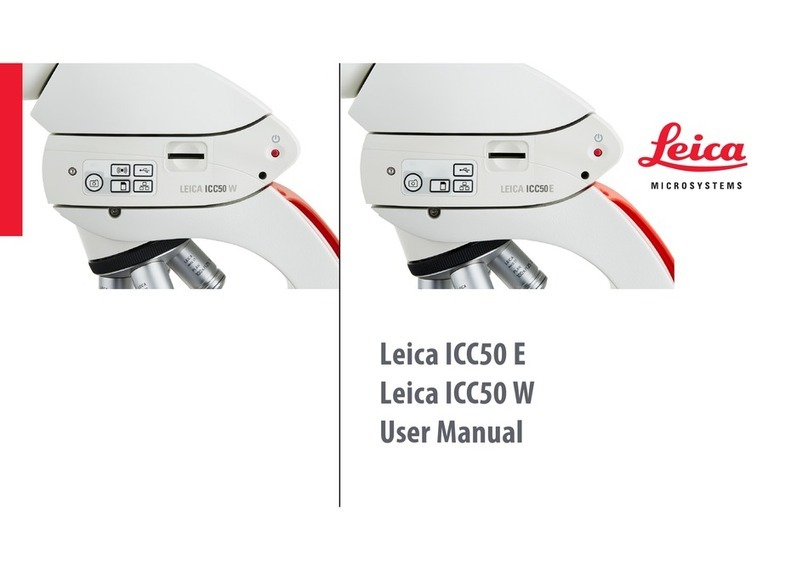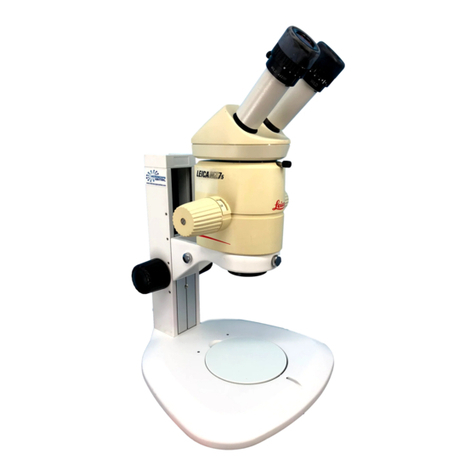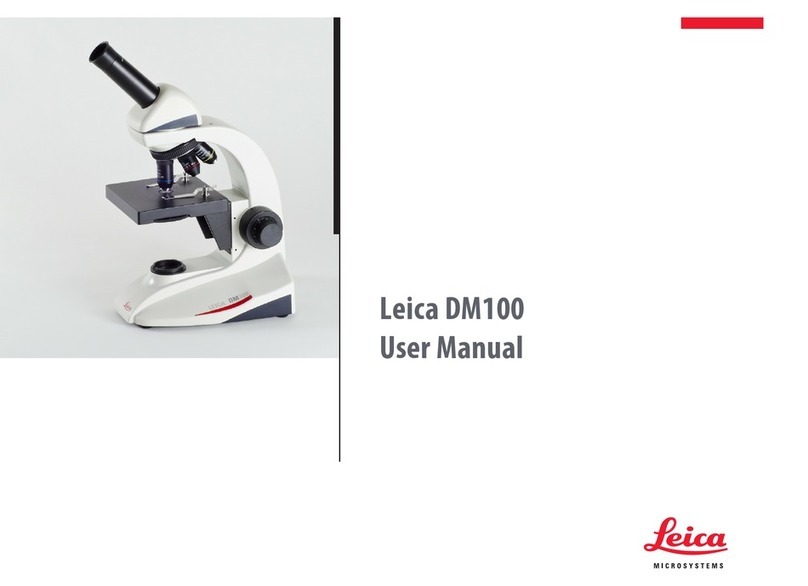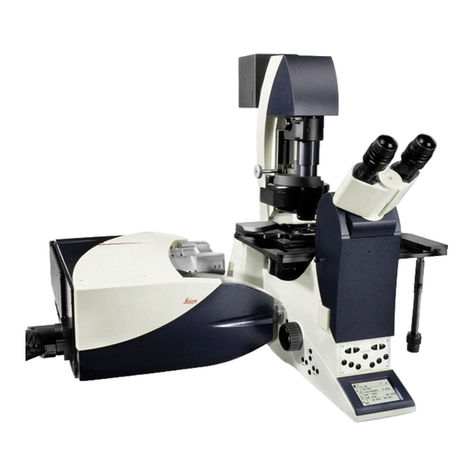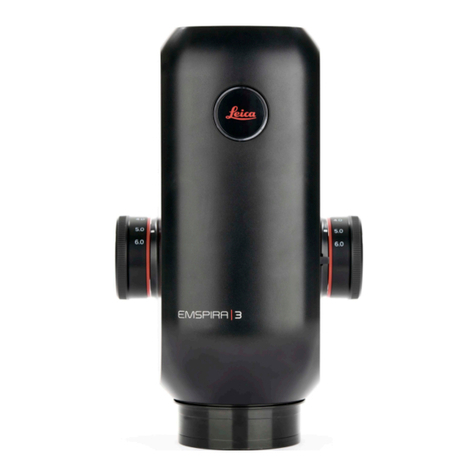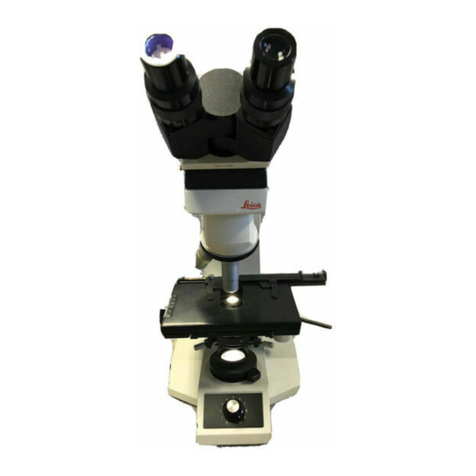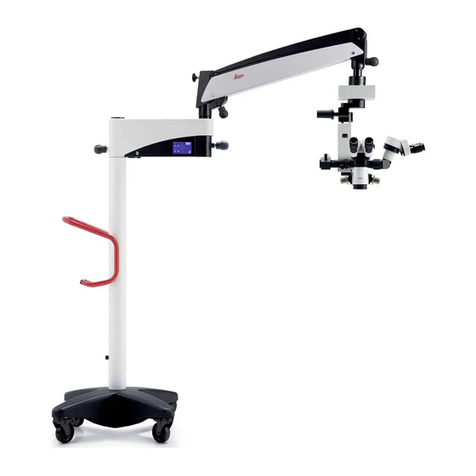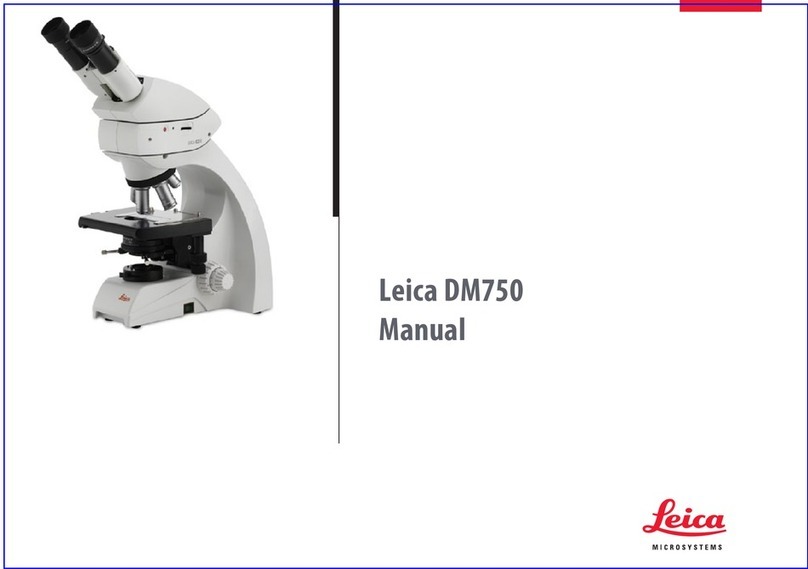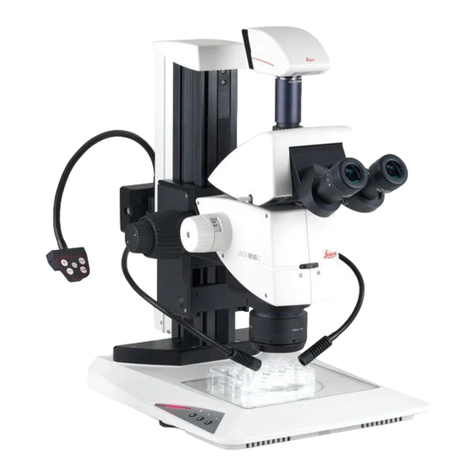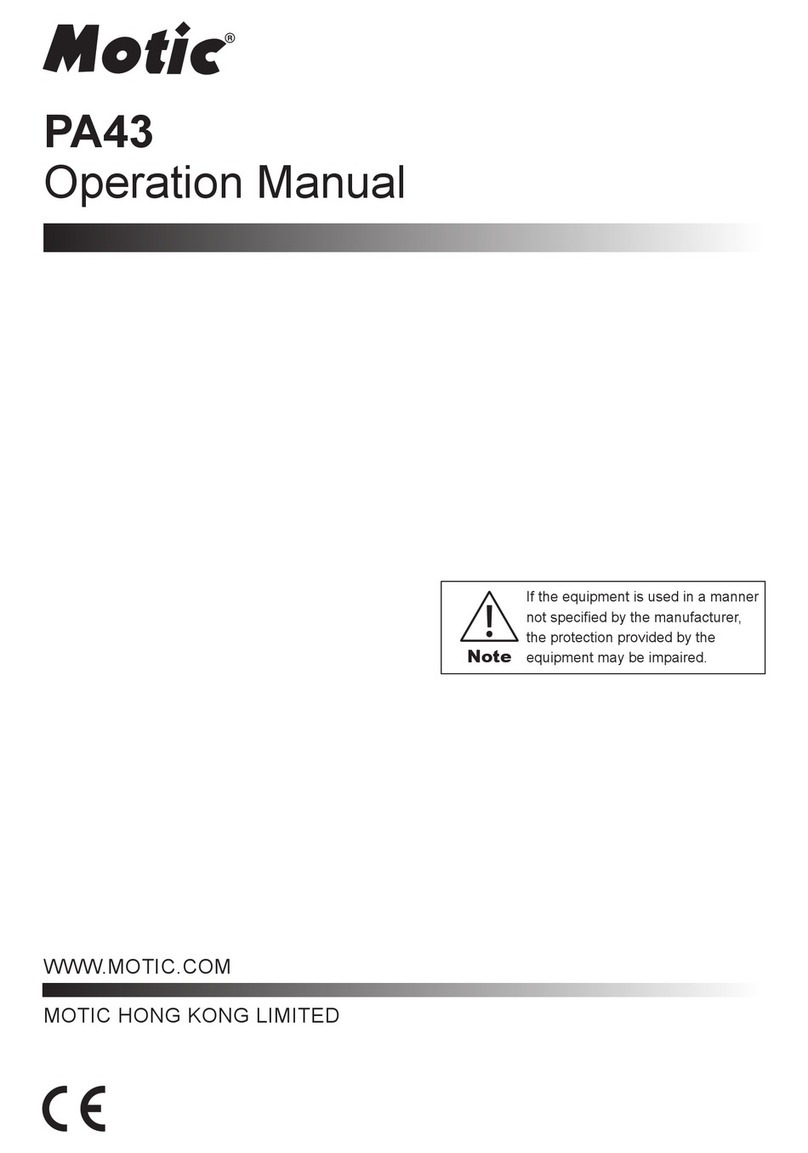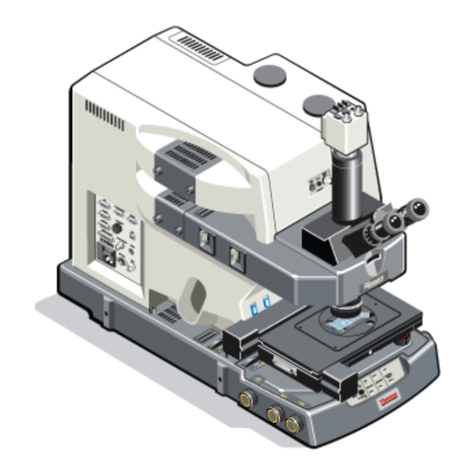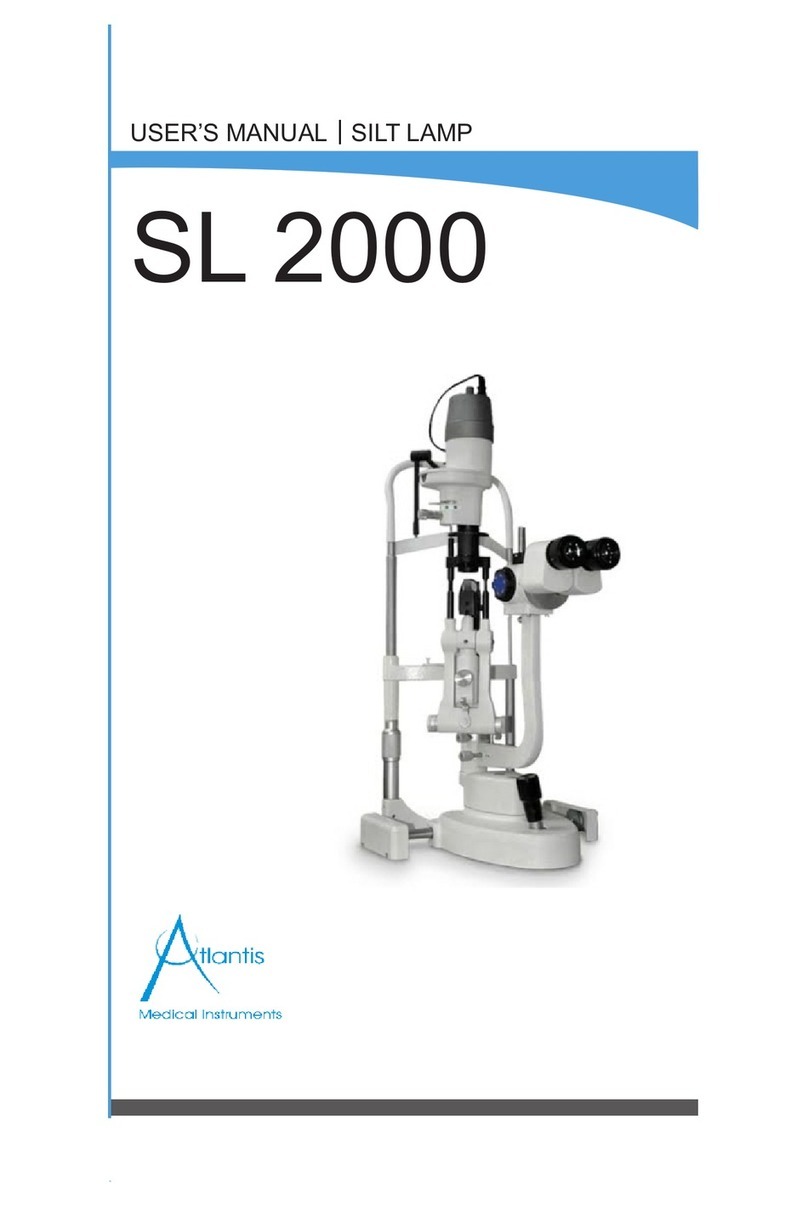
Safety notes
Leica M220 F12 / Ref. 10 716 922 / Version 03 3
3 Safety notes
The Leica M220 F12 surgical microscope is state-of-the-art
technology. Nevertheless, hazards can arise during operation.
X Always follow the instructions in this user manual, and in
particular the safety notes.
3.1 Intended use
• The Leica M220 F12 surgical microscope is an optical instrument
for improving the visibility of objects through magnification
and illumination. It can be applied for observation and
documentation and for human and veterinary medical
treatment.
• The Leica M220 F12 surgical microscope is subject to special
precautionary measures for electromagnetic compatibility.
• Portable and mobile as well as stationary RF communications
equipment can have a negative effect on the reliability of the
Leica M220 F12 surgical microscope's functionality.
• The Leica M220 F12 is intended for professional use only.
3.2 Indication for Use
• The Leica M220 F12 surgical microscope is suitable for
ophthalmic application such as Retina, Cornea and Cataract
surgery in hospitals, clinics or other human medical
instituations.
• The Leica M220 F12 surgical microscope may only be used in
closed rooms and must be placed on a solid floor or mounted to
the ceiling.
• These Instructions for Use are intended for professional
physicians, nurses and other medical and technical staff who
prepare, operate or maintain the device. It is the duty of the
device owner/operator to train and brief all the operating
personnel.
3.3 Contraindications
No known contraindications for Use.
3.4 Directions for the person
responsible for the instrument
X Ensure that the Leica M220 F12 surgical microscope is used only
by persons qualified to do so.
X The Leica M220 F12 surgical microscope may only be operated
by professional persons.
X Ensure that this user manual is always available at the place
where the Leica M220 F12 surgical microscope is in use.
X Carry out regular inspections to make certain that the
authorized users are adhering to safety requirements.
X When instructing new users, do so thoroughly and explain the
meanings of the warning signs and messages.
X Allocate responsibilities for commissioning, operation and
maintenance. Monitor compliance with this.
X Only use the Leica M220 F12 surgical microscope when it is free
of defects.
X Inform your Leica representative or Leica Microsystems
(Schweiz) AG, Medical Division, 9435 Heerbrugg, Switzerland,
immediately about any product defect that could potentially
cause injury or harm.
X If you use accessories from other manufacturers with the
Leica M220 F12 surgical microscope, make sure that these
manufacturers confirm that the combination is safe to use.
Follow the instructions in the user manual for those accessories.
• Only the following accessories may be used with the
Leica M220 F12 surgical microscopes:
• The Leica Microsystems accessories described in chapter9
this User Manual.
• Other accessories, provided that these have been expressly
approved by Leica as being technically safe in this context.
• Modifications to or service on the Leica M220 F12 surgical
microscope may be carried out only by technicians who are
explicitly authorized by Leica to do so.
• Only original Leica replacement parts may be used in servicing
the product.
• After service work or technical modifications, the device must
be readjusted in accordance with our technical specifications.
• If the instrument is modified or serviced by unauthorized
persons, is improperly maintained (as long as maintenance was
not carried out by us), or is handled improperly,
LeicaMicrosystems will not accept any liability.
• The effect of the surgical microscope on other instruments has
been tested as specified in EN 60601-1-2. The system passed the
emission and immunity test. Comply with the usual pre-
cautionary and safety measures relating to electromagnetic and
other forms of radiation
• The electric installation in the building must conform to the
national standard, e.g., current-operated ground leakage
protection (fault-current protection) is suggested.

